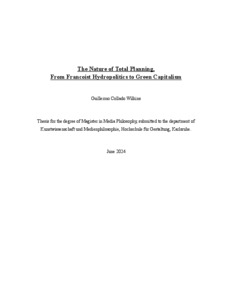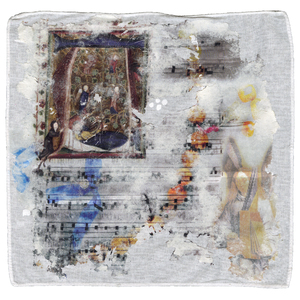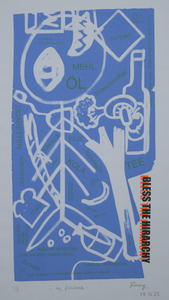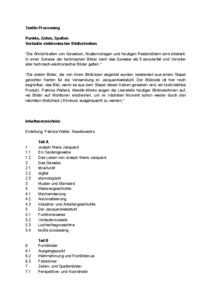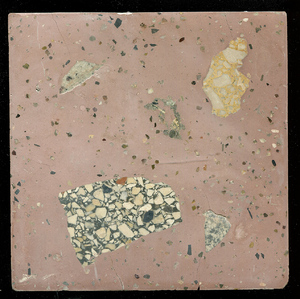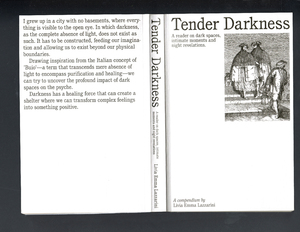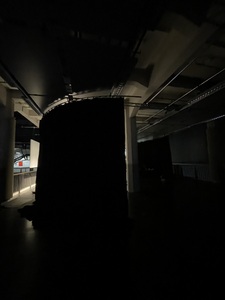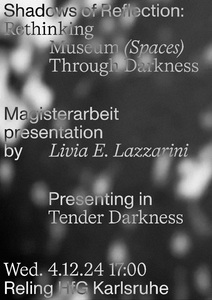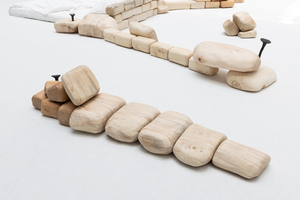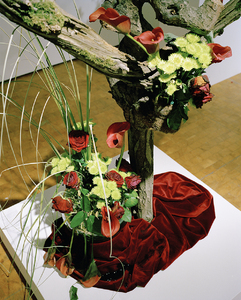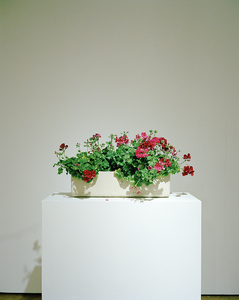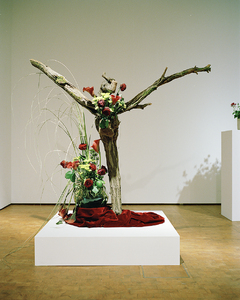"Websites der Fachbereiche"
| Begriff | Websites der Fachbereiche |
| Metakey | Freigabe Nutzung HfG (rights:usage_hfg) |
| Typ | Keyword |
| Vokabular | Rechte |
1761 Inhalte
- Seite 1 von 147
The Nature of Total Planning, From Francoist Hydropolitics to Green Capitalism
- Titel
- The Nature of Total Planning, From Francoist Hydropolitics to Green Capitalism
- Autor/in
- Beschreibung (de)
- Magisterarbeit in Medienphilosophie
- Beschreibung (en)
- Thesis for the degree of Magister in Media Philosophy
- Kategorie
- Schlagworte
- Datierung
- 06.06.2024
- Sprache
- Ort: Institution
- Land
- Titel
- The Nature of Total Planning, From Francoist Hydropolitics to Green Capitalism
- Titel (en)
- The Nature of Total Planning, From Francoist Hydropolitics to Green Capitalism
- Urheberrechtshinweis
- © Guillermo Collado Wilkins
- Rechtsschutz/Lizenz
- Freigabe Nutzung HfG
- Medienersteller/in
- Medien-Beschreibung (en)
- This paper provides a critical examination of ecological planning based on the continuities that it displays across seemingly disparate political projects and historical periods. In order to do so, it draws on the small rural valley of La Bizkaia in Navarre, Spain. It produces an environmental history of the valley through a detailed study of its hydro-forestry resources, periodising such history according to a materialist reading of its ‘metabolic regimes’. That is to say, through the particular configurations between the natural and social orders that dictate life in La Bizkaia.
Initially, the study introduces the valley’s natural characteristics and its property structure, laying the foundations upon which the rest of this paper sits. Subsequently, it undertakes a detailed investigation of Francoist interventions in the 1940s-60s; a massive monoculture of pine trees was planted by the Francoist Forestry Council, which radically undermined La Bizkaia’s natural systems and depopulated it. This paper thus analyses the planning logic behind this natural intervention which, borrowing a term from one of its draftsmen, is named ‘total planning’.
The thesis then explores contemporary management of the valley by the Government of Navarre, which has maintained ownership until this day, aligning its plans with the international protocols and standards characteristic of green capitalism. By looking at projects undertaken in the valley for nature conservation and climate change adaptation, which receive funding from the European Union, this research reveals the continuities between Francoist policies and green capitalism, and how both operate under the logic of Total Planning. Under this planning logic, they both fail to accommodate the unpredictability of political conflict and natural systems.
Planning thus serves as a lens to explore the political and epistemological dimensions of ecological thought, placing a materialist reading of a small case study into the broader context of contemporary ecological intervention.
- This paper provides a critical examination of ecological planning based on the continuities that it displays across seemingly disparate political projects and historical periods. In order to do so, it draws on the small rural valley of La Bizkaia in Navarre, Spain. It produces an environmental history of the valley through a detailed study of its hydro-forestry resources, periodising such history according to a materialist reading of its ‘metabolic regimes’. That is to say, through the particular configurations between the natural and social orders that dictate life in La Bizkaia.
- Alternativ-Text (de)
- Vollständiger Text der Magisterarbeit
- Alternativ-Text (en)
- Complete text of the Magisterarbeit
- Projektleiter/in
- Semester
- Studiengang
- Typ der Abschlussarbeit
- Importiert am
- 22.10.2024
- Übergeordnete Sets
- 1
the flying handkerchief
- Titel
- the flying handkerchief
- Autor/in
- Kategorie
- Typ des Projekts/Werks
- Schlagworte
- Datierung
- 23.02.2024
- Titel
- the flying handkerchief
- Urheberrechtshinweis
- © Juliane Schmitt
- Freigabe Nutzung HfG
- Medienersteller/in
- Medien-Beschreibung
- Zu sehen auf 'The flying handkerchief': Ein Ausschnitt aus den 'Wonnetaler Graduale' einem mittelalterlichen Gesangbuch, Fragmente von Abbildungen von Rosenkränzen aus dem Onlineshop einer Schwester Juliane und ein Portativorgel spielender Engel aus Hans Memlings Altargemälde 'Christus met zingende en musicerende engelen'.
Taschentuch (15x15cm) aus 100% Baumwolle mithilfe von Transfertechniken mit digitaler Collage bedruckt.
- Zu sehen auf 'The flying handkerchief': Ein Ausschnitt aus den 'Wonnetaler Graduale' einem mittelalterlichen Gesangbuch, Fragmente von Abbildungen von Rosenkränzen aus dem Onlineshop einer Schwester Juliane und ein Portativorgel spielender Engel aus Hans Memlings Altargemälde 'Christus met zingende en musicerende engelen'.
- Medien-Beschreibung (en)
- To be seen on 'The flying handkerchief': an excerpt from the 'Wonnetaler Graduale' a medieval hymnal, fragments of images of rosaries from the online store of a Sister Juliane and an angel playing the portative organ from Hans Memling's altarpiece 'Christus met zingende en musicerende engelen'.
Handkerchief (15x15cm) made of 100% cotton printed with digital collage using transfer techniques.
- To be seen on 'The flying handkerchief': an excerpt from the 'Wonnetaler Graduale' a medieval hymnal, fragments of images of rosaries from the online store of a Sister Juliane and an angel playing the portative organ from Hans Memling's altarpiece 'Christus met zingende en musicerende engelen'.
- Projektleiter/in
- Semester
- Studiengang
- Typ der Abschlussarbeit
- Importiert am
- 09.08.2024
- Übergeordnete Sets
- 1
The Fishbone
- Titel
- The Fishbone
- Autor/in
- Kategorie
- Typ des Projekts/Werks
- Schlagworte
- Datierung
- 28.02.2025
- Technik/Verfahren/Formate
- Experimenteller Siebdruck
- Ort: Institution
- Bemerkungen
- Druck 1/5
- Titel
- The Fishbone
- Titel (en)
- The Fishbone
- Urheberrechtshinweis
- © Jonathan Reissinger
- Rechtsschutz/Lizenz
- Freigabe Nutzung HfG
- Medienersteller/in
- Beziehung/Funktion
- Projektleiter/in
- Semester
- Importiert am
- 11.07.2025
- Übergeordnete Sets
- 1
Textile Processing
- Titel
- Textile Processing
- Untertitel
- Punkte, Zeilen, Spalten; Vorläufer elektronischer Bildtechniken
- Autor/in
- Beschreibung (de)
- „Die Ähnlichkeiten von Geweben, Mustervorlagen und heutigen Rasterbildern sind eklatant. In einer Genese der technischen Bilder kann das Gewebe als Exemplarfall und Vorreiter aller technisch-elektronischer Bilder gelten.”
„Die ersten Bilder, die von ihrem Bildkörper abgelöst wurden, bestanden aus einem Stapel gelochter Karten für die Verwendung im Jacquardwebstuhl. Der Bildcode ist hier noch begreifbar, das Bild, wenn es aus dem Stapel dieser Karten gewoben wird, ein textil-taktiles Produkt. Patricia Wallers Needle-Works zeigen die Leerstelle heutiger Bildmaschinen auf, wo Bilder auf Monitoren erscheinen, um im nächsten Moment schon wieder durch den nächsten (Netzhaut-) Eindruck ausgetauscht zu werden.”
- „Die Ähnlichkeiten von Geweben, Mustervorlagen und heutigen Rasterbildern sind eklatant. In einer Genese der technischen Bilder kann das Gewebe als Exemplarfall und Vorreiter aller technisch-elektronischer Bilder gelten.”
- Beschreibung (en)
- “The similarities between fabrics, patterns and today's raster images are striking. In the genesis of technical images, the fabric can be regarded as an exemplary case and forerunner of all technical-electronic images.”
“The first images that were detached from their image body consisted of a stack of perforated cards for use in the Jacquard loom. The image code is still comprehensible here, the image, when woven from the pile of these cards, is a textile-tactile product. Patricia Waller's needle works show the blank space of today's image machines, where images appear on monitors only to be replaced by the next (retinal) impression in the very next moment.”
- “The similarities between fabrics, patterns and today's raster images are striking. In the genesis of technical images, the fabric can be regarded as an exemplary case and forerunner of all technical-electronic images.”
- Kategorie
- Typ des Projekts/Werks
- Schlagworte
- Datierung
- 02.11.1998
- Sprache
- Ort: Institution
- Stadt
- Titel
- Textile Processing
- Urheberrechtshinweis
- Brigit Schneider
- Rechtsschutz/Lizenz
- Freigabe Nutzung HfG
- Medienersteller/in
- Beziehung/Funktion
- Projektleiter/in
- Semester
- Studiengang
- Typ der Abschlussarbeit
- Archiv-Signatur
- HfG HS 1998 02
- Externes Archiv
- Importiert am
- 04.08.2023
- Übergeordnete Sets
- 1
Terrazzofliesen
- Titel
- Terrazzofliesen
- Autor/in
- Kategorie
- Schlagworte
- Titel
- Terrazzofliesen
- Titel (en)
- Terrazzo tiles
- Urheberrechtshinweis
- ©Leonie Mühlen
- Rechtsschutz/Lizenz
- Freigabe Nutzung HfG
- Medienersteller/in
- Beziehung/Funktion
- Medien-Beschreibung
- Terrazzofliesen
25 Stk, 20 x 20 x 2cm, Zement, diverse Zuschlagstoffe
- Terrazzofliesen
- Medien-Beschreibung (en)
- Terrazzo tiles
25 pcs, 20 x 20 x 2cm, cement, various aggregates
- Terrazzo tiles
- Projektleiter/in
- Semester
- Studiengang
- Typ der Abschlussarbeit
- Importiert am
- 17.06.2024
- Übergeordnete Sets
- 1
Tender Darkness. Cover spread, 200pp.
- Titel
- Tender Darkness. Cover spread, 200pp.
- Titel
- Tender Darkness. Cover spread, 200pp.
- Urheberrechtshinweis
- © Livia Emma Lazzarini
- Rechtsschutz/Lizenz
- Freigabe Nutzung HfG
- Medienersteller/in
- Beziehung/Funktion
- Medien-Beschreibung (en)
- A collection of texts and artworks that explores a broader and more personal interpretation of darkness as a lived experience.
- A collection of texts and artworks that explores a broader and more personal interpretation of darkness as a lived experience.
- Importiert am
- 25.06.2025
- Übergeordnete Sets
- 1
Tender Darkness
- Titel
- Tender Darkness
- Titel
- Tender Darkness
- Urheberrechtshinweis
- © Livia Emma Lazzarini
- Freigabe Nutzung HfG
- Medienersteller/in
- Importiert am
- 07.07.2025
- Übergeordnete Sets
- 1
Tender Darkness
- Titel
- Tender Darkness
- Titel
- Tender Darkness
- Urheberrechtshinweis
- © Livia Emma Lazzarini
- Freigabe Nutzung HfG
- Medienersteller/in
- Medien-Beschreibung
- Poster invitation to the defence
- Importiert am
- 14.07.2025
- Übergeordnete Sets
- 1
Tagesbett
- Titel
- Tagesbett
- Autor/in
- Kategorie
- Schlagworte
- Material
- Ort: Institution
- Ort
- Lichthof 3
- Stadt
- Land
- Beteiligte Institution(en)
- Titel
- Tagesbett
- Urheberrechtshinweis
- © Florian Knöbl
- Rechtsschutz/Lizenz
- Freigabe Nutzung HfG
- Beziehung/Funktion
- Projektleiter/in
- Semester
- Studiengang
- Typ der Abschlussarbeit
- Importiert am
- 20.10.2024
- Übergeordnete Sets
- 1
Tag 5
- Titel
- Tag 5
- Autor/in
- Kategorie
- Typ des Projekts/Werks
- Schlagworte
- Titel
- Tag 5
- Titel (en)
- Day 5
- Urheberrechtshinweis
- © Johanna Hoth, Wataru Murakami
- Rechtsschutz/Lizenz
- Freigabe Nutzung HfG
- Medienersteller/in
- Beziehung/Funktion
- Semester
- Studiengang
- Typ der Abschlussarbeit
- Importiert am
- 30.07.2024
- Übergeordnete Sets
- 1
Tag 5
- Titel
- Tag 5
- Autor/in
- Kategorie
- Typ des Projekts/Werks
- Schlagworte
- Titel
- Tag 5
- Titel (en)
- Day 5
- Urheberrechtshinweis
- © Johanna Hoth, Wataru Murakami
- Rechtsschutz/Lizenz
- Freigabe Nutzung HfG
- Medienersteller/in
- Beziehung/Funktion
- Semester
- Studiengang
- Typ der Abschlussarbeit
- Importiert am
- 30.07.2024
- Übergeordnete Sets
- 1
Tag 5
- Titel
- Tag 5
- Autor/in
- Kategorie
- Typ des Projekts/Werks
- Schlagworte
- Titel
- Tag 5
- Titel (en)
- Day 5
- Urheberrechtshinweis
- © Johanna Hoth, Wataru Murakami
- Rechtsschutz/Lizenz
- Freigabe Nutzung HfG
- Medienersteller/in
- Beziehung/Funktion
- Semester
- Studiengang
- Typ der Abschlussarbeit
- Importiert am
- 30.07.2024
- Übergeordnete Sets
- 1
